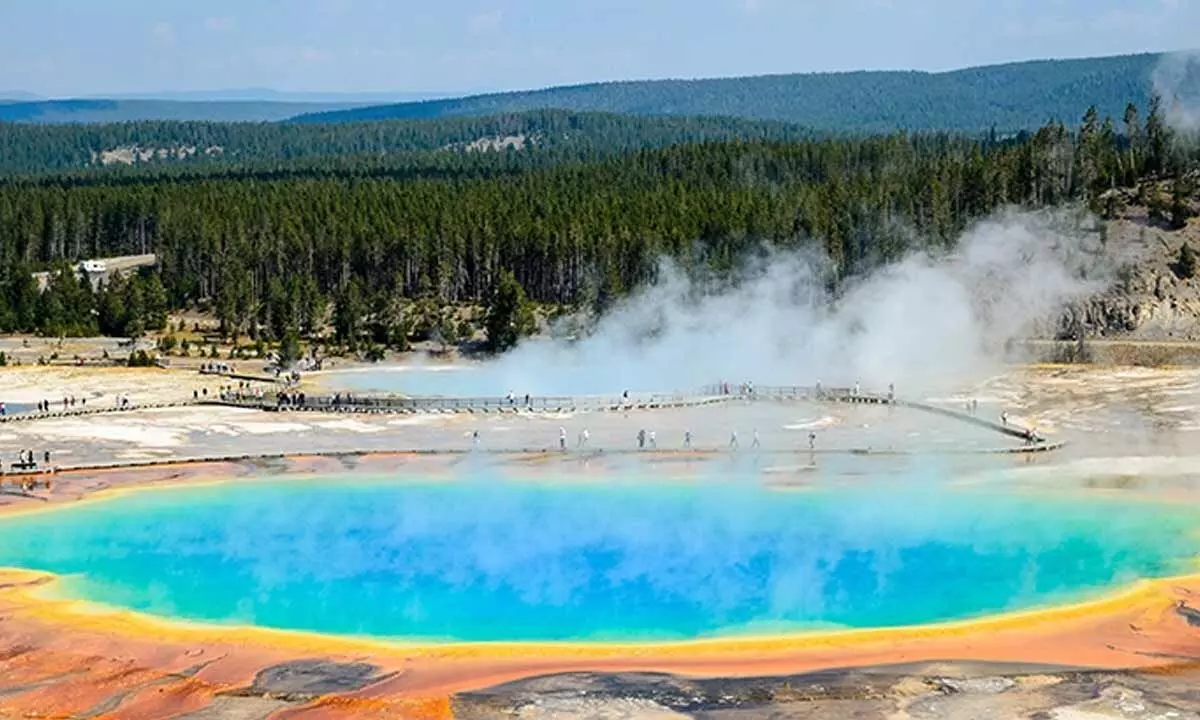Live
- Gold rates in Vijayawada today surges check the rates on 10 January, 2025
- Man held for Rs 10.32 lakh cyber fraud
- Several VIPs Flock to Tirumala amid Vaikuntha Ekadashi
- Rising number of mortalities of infants in Yadagiri causes concern
- Jeans park to be set up in Ballari: 154 acres acquired, says MB Patil
- Veena concert captivates audience
- Nadendla lauds RTGS, confident of tech potential to change governance
- Pawan Kalyan to Launch Development Programs in Pithapuram on Friday
- BJP expresses condolence over death of 6 devotees
- Arrangements reviewed for Kotappakonda Tiranalu
Just In
Much More Liquid Magma is Stored in the Yellowstone Supervolcano


Much More Liquid Magma is Stored in the Yellowstone Supervolcano
- There is significantly more magma under Yellowstone than was previously believed, by an international team of experts, providing crucial insights to models that could be used to improve our predictions of the next major eruption.
- The goal of the investigation, led by geologist Ross Maguire of the University of Illinois Urbana-Champaign, was to ascertain how much magma was present in Yellowstone's supervolcano and how it was distributed.
According to a recent study, there is significantly more magma under Yellowstone than was previously believed, by an international team of experts, providing crucial insights to models that could be used to improve our predictions of the next major eruption. Because of the magma reservoir it contains, the Yellowstone supervolcano in northwest Wyoming is not just one of the most fascinating sites on Earth, but also one that may be among the most volatile.
The research also shows that, despite being large, the added substance doesn't increase the likelihood of an impending eruption. The goal of the investigation, led by geologist Ross Maguire of the University of Illinois Urbana-Champaign, was to ascertain how much magma was present in Yellowstone's supervolcano and how it was distributed.
It's difficult to see deep underground, but the researchers used a recently developed tomographic imaging method to examine seismic wave recordings made between 2000 and 2018. They then applied a technique called full waveform inversion to better understand the vibrations that were bouncing and reflecting. The researchers determined the mushy magma reservoir beneath Yellowstone has a partial melt fraction of between 16 and 20 percent, compared with earlier models indicating 10 percent or less, based on how the speed of the detected waves fluctuates at different depths.
This recent study found that the slowest speeds were found between 3 and 8 kilometres below the surface, indicating that this is where the majority of the liquid melt is found. The newly uncovered melt-rich zone is "essential indicator" of where Yellowstone is in its eruptive cycle, but it only makes up a portion of the bigger picture, according to the researchers. As fresh data is gathered and new eruptions take place, prediction models are continuously improved.
While it is uncertain when the next catastrophic eruption from Yellowstone may occur, having a better understanding of the caldera's geology will always be beneficial. In the last 2.1 million years, there have been three such eruptions. The United States Geological Survey and the Yellowstone Volcano Observatory keep a close eye on the region, so any further warning signs should be identified well in advance.

© 2025 Hyderabad Media House Limited/The Hans India. All rights reserved. Powered by hocalwire.com






